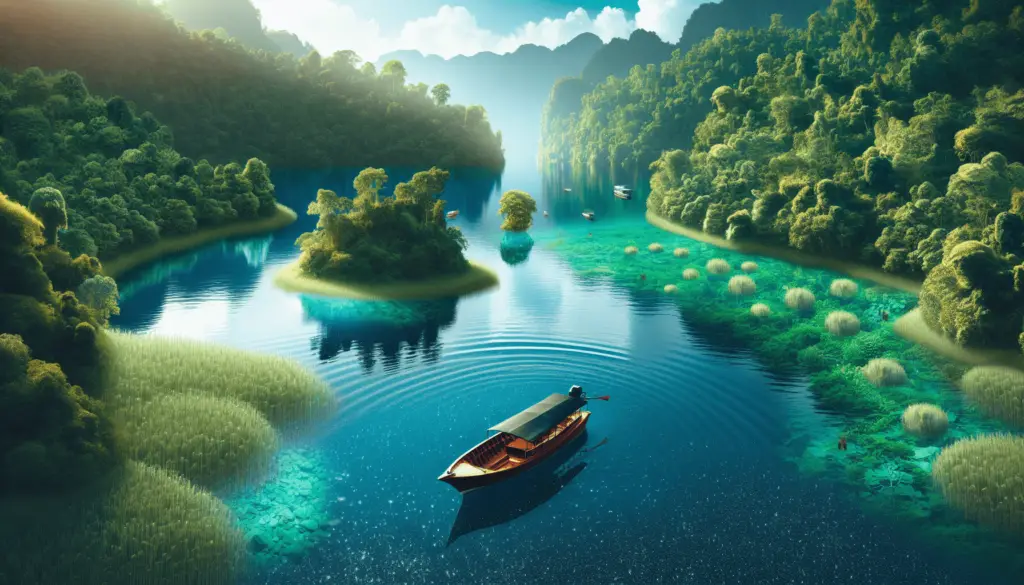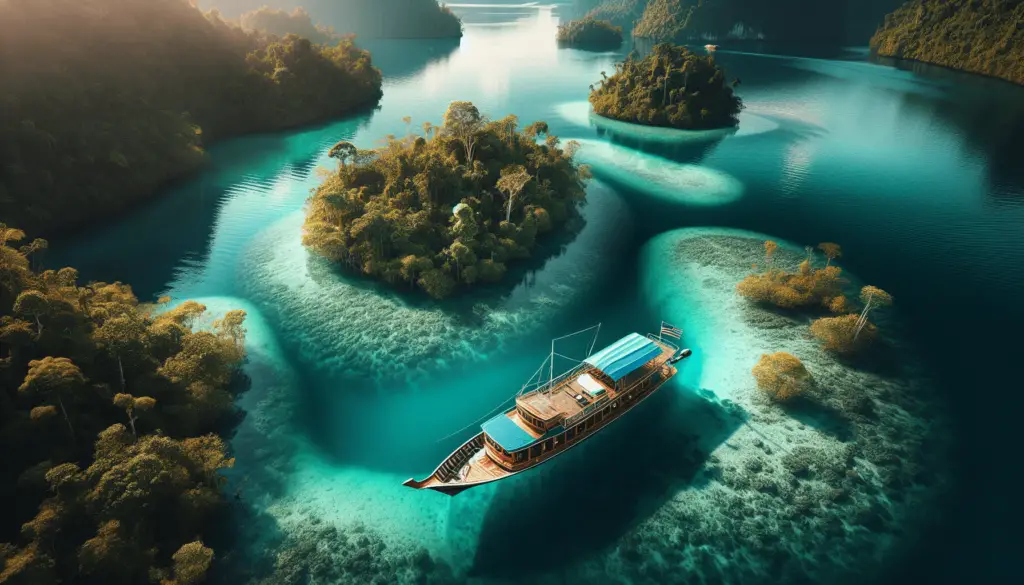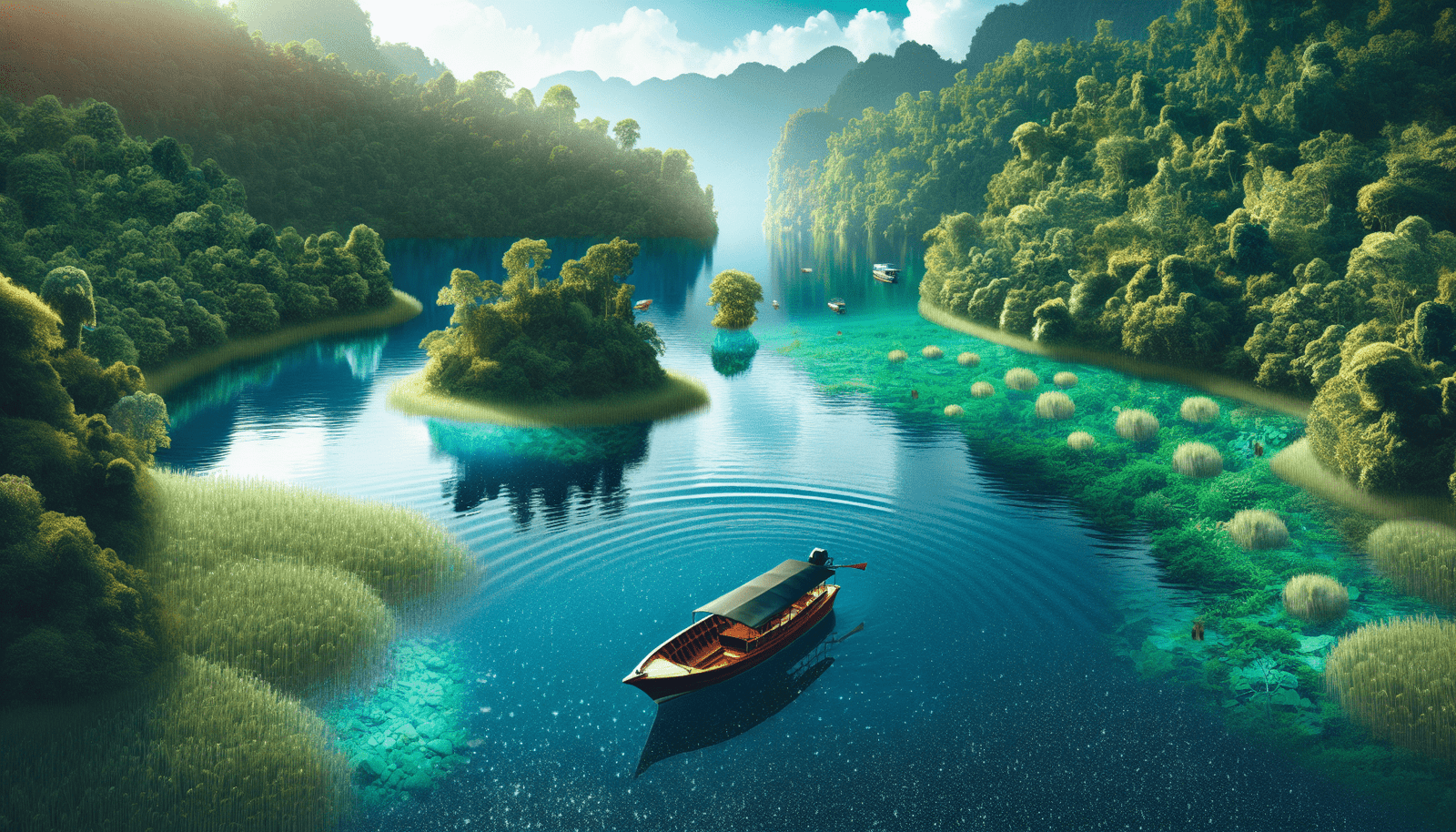Unlocking the secrets of responsible boating, the article “Preserving Natural Habitats While Boating,” offers a comprehensive guide to respect and protect nature while you partake in your favorite pastime. The piece illustrates how you, as a boater, can reduce your environmental footprint and ensure that wildlife and their habitats remain untouched for future generations to appreciate. Through careful exploration of tactics, hints, and trade tricks, the article equips you with the knowledge and tools to be an eco-conscious boater. Prepare yourself for an enlightening journey on how to harmonize your love for boating with a commitment to conservation.
Understanding the Importance of Natural Habitats
To kick things off, it’s crucial to understand why natural habitats hold such significant value in our ecosystem. Natural habitats provide a haven for various species to live, breed, and thrive. Without these fertile grounds, our wildlife wouldn’t be able to withstand the changing environment.
Connection of biodiversity to natural habitats
Biodiversity, or the variety of life in a particular habitat or ecosystem, is intrinsically linked to natural habitats. These habitats offer different environments suitable for varied species, which ultimately contributes to a healthy, flourishing biodiversity. From lush forests to underground caves, each natural habitat has its unique ecosystem that hosts a vast array of life forms.
Role of natural habitats in ecosystem
Natural habitats play a pivotal role in maintaining the balance of our ecosystem. They provide food, shelter, breeding grounds, and even act as a hideout for various species. These habitats also help in regulating climate, recycling and purifying water, and numerous other ecological processes that ensure the survival and well-being of life forms on Earth.
Threats to natural habitats from boating activities
Unfortunately, some boating activities can pose threats to these natural habitats. From propeller scars damaging seagrass beds to oil and fuel spills contaminating water bodies, these activities can significantly impact living organisms in these habitats. Excessive noise from engines can also disturb wildlife, particularly those with acute sensory perception like dolphins and whales.
Adopting Eco-Friendly Boating Practices
Thankfully, a slew of eco-friendly boating practices can help us mitigate the threats to natural habitats.
Minimizing engine exhaust emissions
Cutting down on exhaust emissions from boat engines is a fantastic place to start. You can achieve this by maintaining your engines regularly, avoiding unnecessary idling, and choosing fuel-efficient models when you’re on the market for a new boat.
Proper disposal of waste and trash
Disposing of your waste and trash properly is equally important. Never dump these in water bodies. Instead, collect them in a sealed container and dispose of them at approved waste stations.
Use of eco-friendly cleaning products for boat maintenance
When cleaning and maintaining your boat, opt for eco-friendly products. Many conventional cleaning fluids contain chemicals that can harm marine life and degrade water quality.
Encourage low-wake and slow-speed zones
Respecting and encouraging low-wake and slow-speed zones can reduce shoreline erosion, protect local wildlife and make the waterways safer and more enjoyable for everyone.

Preventing Water Pollution
Water pollution from boating can be lethal to aquatic life, so eliminate any potential sources of pollution.
Controlling oil and fuel spills
Being cautious when refilling your fuel can prevent accidental spills. Fit a device to catch any overflow during refilling and have oil spill response equipment on board in case of emergencies.
Proper use of sanitation facilities onboard
Ensure to use onboard sanitation facilities correctly. Never discharge sewage into open water, but instead, use pump-out facilities.
Avoidance of dumping plastics in water bodies
Never toss plastic items overboard. They’re perfectly capable of wreaking havoc on marine life and last for centuries in the natural environment.
Impacts of Anchoring and Mooring
The act of anchoring and mooring can create unexpected impacts on aquatic ecosystems.
Damages caused by anchoring to aquatic ecosystems
Anchors can destroy delicate aquatic ecosystems, such as fragile seagrass beds and coral reefs, which are vital marine habitats.
Proper anchoring techniques to minimize damage
To avoid such damages, learn proper anchoring techniques and avoid dropping anchor on sensitive areas. Additionally, you can use environmentally friendly anchors designed to minimize seafloor disturbance.
Utilizing designed mooring spots
Whenever possible, utilize assigned mooring spots instead of dropping anchor. These spots are mapped out to reduce impact on the seabed.

Understanding Invasive Species
Invasive species is another essential aspect to consider when focusing on boating’s environmental impact.
Introduction of invasive species through boating
Boating vessels, especially those traveling from different regions, can unintentionally introduce invasive species to local water bodies. These invaders can hitch a ride in ballast water, on hulls, or even on the anchor.
Effects of invasive species on local aquatic life
Once established, these invasive species can outcompete local species for resources, disrupt the balance of the ecosystem, and even lead to the extinction of native species.
Preventive measures to avoid spreading invasive species
To prevent the introduction and spread of such species, it’s essential to clean your boat thoroughly before moving it to a different water body. This includes the hull, propeller, rudders, and any gear that has been in the water.
Awareness and Education
Awareness and education can make a tremendous difference in conserving our natural habitats.
Importance of educating boaters on environment conservation
Educating boaters about the importance of environmental conservation and the impact of their activities on natural habitats can lead to a significant reduction in damaging practices. This education can come in the form of workshops, informational material, or even signage at boating facilities.
Using guided tours for better understanding of habitats
Guided tours can provide boaters with a better understanding of habitats and their significance. They can also shed light on specific challenges these habitats face and how to minimize the impact of boating activities.
Participating in local cleanups and conservation activities
Participating in local cleanups and conservation activities is another excellent way to contribute to the protection of natural habitats and understand the issues they face, firsthand.
Abiding by Laws and Regulations
Laws and regulations are instruments designed to protect natural habitats and ensure sustainable boating practices.
Understanding local and international water laws
Take the time to familiarize yourself with local and international laws regarding boating and protected marine areas. This includes speed limits, ‘no-wake’ zones, and restrictions on discharging waste and fishing.
Penalties for disregarding conservation laws
Keep in mind that disregarding these conservation laws often results in hefty penalties. These can range from fines to confiscation of equipment, and in extreme cases, can even lead to imprisonment.
Adopting regulatory signs and area markers
Be aware of and respect regulatory signs and area markers. They exist for reasons like protecting sensitive habitats, preventing accidents, and ensuring the well-being of wildlife.
Wildlife Interaction Etiquette
Our natural habitats are home to numerous wildlife species. Hence, it’s vital to exercise etiquette when interacting with them to safeguard their well-being.
Understanding the impact of boating on wildlife
First and foremost, understand that boating can stress and disturb wildlife. Loud engine noises can frighten them, and high speeds can lead to collisions, often resulting in injury or death.
Guidelines for safe and respectful wildlife observation
Follow guidelines for safe and respectful wildlife observation. Maintain a respectful distance, avoid feeding them, and never attempt to touch or capture them. Each interaction should leave them as undisturbed as possible.
Avoidance of disturbing nesting and breeding areas
Particularly important is the avoidance of nesting and breeding areas. These areas are crucial for the survival of species, and disturbing them can have devastating effects on their populations.
Contribution to Conservation Initiatives
Contributing to conservation initiatives is another powerful way of helping protect our natural habitats.
Engaging in habitat restoration projects
Getting involved in habitat restoration projects can be immensely rewarding. These projects work to replenish damaged habitats, helping them return to their former health and vibrancy.
Support to research and monitoring programs
Providing support to research and monitoring programs can be instrumental in providing valuable data to scientists studying these habitats. Your support can come in the form of donations, volunteer work, or even citizen science initiatives.
Donations towards conservation efforts
Lastly, consider donating to conservation efforts. Every bit of financial aid can make a difference in ensuring continuous efforts to protect our natural habitats.
Responsible Fishing Practices
If you’re an angler, responsible fishing practices are imperative to protect our waterways and their inhabitants.
Adherence to fishing seasons and limits
Always adhere to fishing seasons and catch limits. These rules are set to ensure the sustainability of fish populations and their habitats.
Correct handling and release of caught fish
Learn and apply correct handling and release practices for caught fish, especially if you’re practicing catch-and-release fishing. These practices can significantly increase the survival rate of released fish.
Avoidance of harmful fishing methods and gear
Finally, avoid using harmful fishing methods and gear. Choose equipment and techniques that limit bycatch, reduce habitat damage, and decrease stress and harm to the fish you catch.
In summary, each of us, as boaters, has a role to play in protecting our natural habitats. With a clear understanding of the importance of these habitats, adopting eco-friendly boating practices, and exercising responsible behavior, we can ensure the sustainability of these habitats for future generations. Remember, the sea is our playground, let’s treat it with the respect it deserves.

